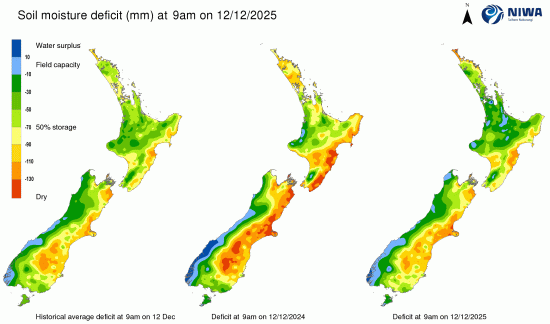Here's our summary of key economic events overnight that affect New Zealand, with news financial markets are struggling to make sense of the US Fed's latest rate cut rationale, one that looks infused with new White House politics.
First up this morning, the US central bank cut its policy rate by -25 bps to 4.25% as expected, despite noting that American inflation is "somewhat elevated". It is their first reduction in borrowing costs since December 2024.
They said they saw economic activity moderating in the first half of the year with job gains slowing and the unemployment rate edging up. But they still called their jobless rate 'low'. At the same time they noted inflation has moved up. But their economic projections showed they expect inflation over the next year to average 3.4%, higher than the latest CPI level of 2.9%.
For some reason, this rising inflation, and 'low' unemployment was the basis for cutting their policy rate. Like many core US institutions, partisan politics is now infecting the Fed. Keeping the pressures under cover, the Fed's press release was unusually short this time, likely papering over the pressures being brought to bear. It looks like the only dissenter was the recent White House injected member.
Financial markets have reacted however. After being lower ahead of the decisions, the S&P500 went volatile and is back, tracking slightly lower. The bond market also went volatile, and changed its course to push yields higher. The USD fell and the dollar index (DXY) is now at its lowest level since February 2022. Gold pushed up to a new record high - and then fell back. None of these reactions show confidence in the Trump pressures on the Fed.
Meanwhile, US mortgage applications jumped sharply last week, a week that included the US Labor Day holiday. Mortgage interest rates dipped -10 bps in the week and borrowers who need to refinance rushed the opportunity. But new borrowing not so much.
However, American housing starts tumbled uncomfortably in August, down far more than was anticipated to be -8.5% below July levels, and -6.0% lower than year-ago levels. New house building consents came in -11.1% below year ago levels, so it is unlikely their housebuilding industry will recover any time soon.
Overnight, Canada also reviewed its policy interest rate and cut them too, largely as expected. That takes their key rate to 2.5%. They see a weakening in the resilience first shown by Canadian reactions to their bullying from their southern neighbour. They are watching Canadian consumers and businesses becoming more 'cautious'.
In Australia later today, we will get the August labour market report where another small gain in jobs is anticipated (+22,000) and their jobless rate is expected to hold at 4.2%.
The UST 10yr yield is now at 4.07%, up +4 bps from yesterday at this time after some bumpy volatility. The key 2-10 yield curve is still at +51 bps. Their 1-5 curve is no longer inverted. And their 3 mth-10yr curve is now inverted by only -3 bps. The China 10 year bond rate is down -1 bp at 1.85%. The Australian 10 year bond yield starts today at 4.23%, up +1 bp from yesterday. The NZ Government 10 year bond rate starts today at just on 4.30%, down -1 bp from yesterday.
Wall Street is now unchanged on the S&P500 after the Fed and Powell's press conference start. Overnight, European markets were little-changed in Wednesday trade. Tokyo dipped -0.2% yesterday. Hong Kong rose +1.8% and Shanghai was up +0.4%. Singapore fell -0.3%. The ASX200 fell -0.7% on Wednesday. The NZX50 was unchanged.
The price of gold will start today at US$3,658/oz, down -US$29 from yesterday post the Fed.
American oil prices are little-changed at just under US$64.50/bbl, with the international Brent price firmish just under US$68.50/bbl.
The Kiwi dollar is at just on 59.7 USc and down -25 bps from yesterday. Against the Aussie we are unchanged at 89.6 AUc. Against the euro we are down -5 bps at 50.4 euro cents. That all means our TWI-5 starts today at just over 66.5, down -20 bps from yesterday.
The bitcoin price starts today at US$115,997 and down -0.4% from this time yesterday. Volatility over the past 24 hours has again been low at just under +/- 0.8%.
Join us at 10:45am this morning for full coverage of the New Zealand Q2-2025 GDP result. Financial markets are expecting a -0.3% dip from Q1 and no year-on-year economic expansion.
Daily exchange rates
Select chart tabs
The easiest place to stay up with event risk is by following our Economic Calendar here ».
16 Comments
The Trump administration, given the above activity, has certainly mastered the art of uncertainty. And the certain result of uncertainty is loss of confidence, and balance, and when coupled with pressure, an invitation to crisis and collapse. Well tested theory as evidenced for instance last weekend by the men in black, the last forty minutes.
I thought that was an example of the other team being better than us, possibly aided by the other team not having any restrictions around who they pick paying domestic rugby.
Weird rate cut. Inflation well up. I guess they are looking through the number and banking on it being self-tax related and that the employment situation will keep wages in check... for now.
It maybe smart front running possible coming US recession
lots indicating issue surfacing, slight tap on accelerator probably ok here.
No. Sucking up to Trump and his trolls. They have long flagged they wanted a rate cut to stimulate things against the damage they're doing.
Ah but Murray the FED is independent
Tell Trump that. See if he agrees.
Yes, it is a very slight tap. Nothing though, will save that economy.
"Evidence shows the US is not only growing but pulling away from the UK and Europe and that the growth of the gap is accelerating.
Comparing the size of both economies from where they were at the eve of the pandemic, real GDP in the US was 13pc above its Q4-2019 level by Q2-2025 whereas the UK had only risen to 4.5pc above that benchmark. The US growth pulled ahead by some 8.5 percentage points, almost three times the growth of the UK economy.
...Put very simply, the US devotes a larger slice of its economy to private capital formation, whereas Britain doesn’t. This difference drives productivity improvements to the benefit of US business growth and employees’ take-home pay.
The result in comparative purchasing power is truly astonishing. Eurostat’s own analysis showed that for the EU benchmarked in 2022 at 100, US citizens had achieved a comparative purchasing power of 153 – that’s 53pc better off. The UK was at only at 106, only 6pc better off than the EU average."
https://www.telegraph.co.uk/money/tax/income/donald-trump-tax-cuts-amer…
The poverty rate in the United States varies depending upon the method of measurement. According to the U.S. Census Bureau, the official 2017 poverty rate in the U.S. was 12.3%. However, other sources placed it as high as 17.8%. Despite being the largest economy in the world, the U.S. also has a significant wealth inequality gap. The 2021 poverty threshold in the United States is $26,246 for a family of four. This means that households with two adults, two children, and a pre-tax income of less than $26,246 are considered to be living in poverty. Some states are more impoverished than others, and their poverty is exacerbated by high unemployment rates and a lack of high-paying jobs.
Interesting that Profile felt the need, after yesterday's thread. And nobody to turn to but
The reluctant newsman: How the Telegraph finally found an owner
RedBird boss Gerry Cardinale — a former Goldman Sachs banker with little news pedigree — will take control of the UK’s leading rightwing broadsheet, with the Middle Eastern buyers for whom he originally instigated this deal relegated to minority backers.
Both the US and Europe are in terminal trouble. Comparing them is a joke; 1st Class vs 2nd Class Titanic passengers.
dp
What evidence? What Trump is saying?
Try reading the comment to the end?
Trump derangement syndrome at Eurostar?
"Eurostat’s own analysis showed that for the EU benchmarked in 2022 at 100, US citizens had achieved a comparative purchasing power of 153 – that’s 53pc better off. The UK was at only at 106, only 6pc better off than the EU average."
Yes but what is the evidence that supports that?
"But Europe is mostly tripping over its own shoelaces: over-regulation and red tape are holding back productivity growth, while fragmented capital markets hinder efficient funding. Rules covering everything from the curvature of cucumbers to the minimum diameter of clams impede innovation and make doing business in the Eurozone harder than in the US. In the World Bank’s Doing Business rankings, EU economies outperform the US on only two indicators – getting electricity and trading across borders – and that too by a small margin.
https://www.allianz.com/en/economic_research/insights/publications/spec…
"The economy" ie GDP is a metric used far beyond its usefulness. Like celebrating rising house prices and ignoring any negative outcomes



We welcome your comments below. If you are not already registered, please register to comment
Remember we welcome robust, respectful and insightful debate. We don't welcome abusive or defamatory comments and will de-register those repeatedly making such comments. Our current comment policy is here.